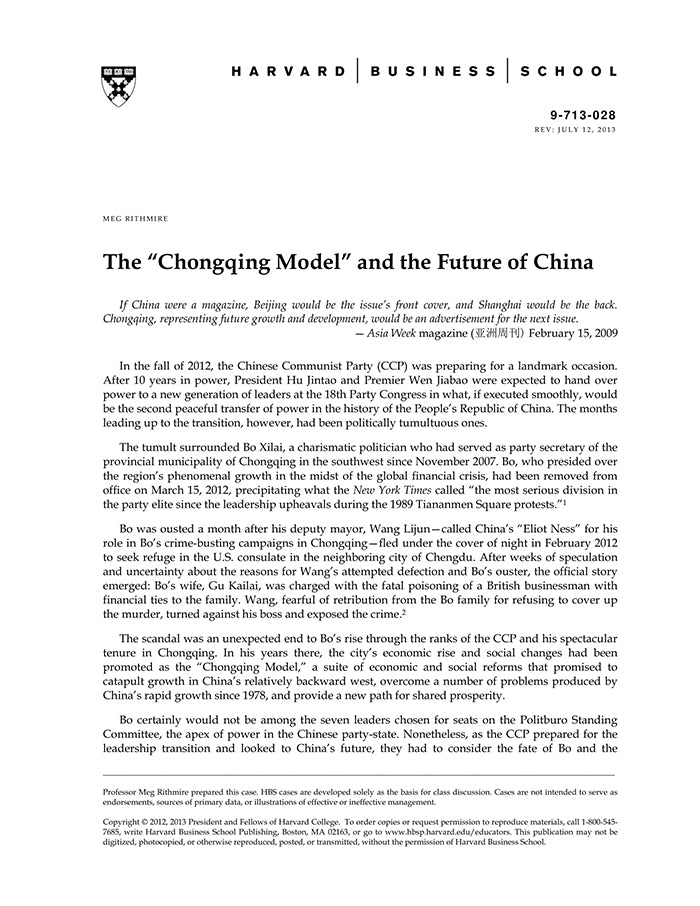The "Chongqing Model" and the Future of China
受取状況を読み込めませんでした
Since opening to the global economy in 1979, but especially since entering the WTO in 2001, China's economy grew at rates around 10% annually by attracting FDI and promoting exports. After the financial crisis that began in 2008 and depressed demand in the United States and Europe, China's growth began to slow, and vulnerabilities in its economy came to light. It became clear to many in China that the growth strategy that got China from 1978 to the present was unsustainable and that the country needed a new strategy to resolve the country's regional inequalities, stimulate domestic consumption, and create growth less vulnerable to global contractions in demand. At exactly this time, between 2007 and 2012, the provincial municipality of Chongqing in China's mountainous southwest became the fastest growing city in China with GDP growth averaging over 15%. Chongqing's growth was the result of a suite of economic and social policies that had been dubbed the "Chongqing Model," a controversial bundle of reforms that promised public and private sector growth with benefits more equitably shared by all citizens. Yet critics found the model politically suspect and over reliant on state-owned enterprises and debt-driven investment. When the city's preeminent leader was publicly fired following a sensational murder scandal, the region's new leaders-and indeed China's new leaders-had to weigh in on the "Chongqing Model." Would it signal a new path to prosperity for post-WTO China?
【書誌情報】
ページ数:36ページ
サイズ:A4
商品番号:HBSP-713028
発行日:2012/12/5
登録日:2013/4/16


